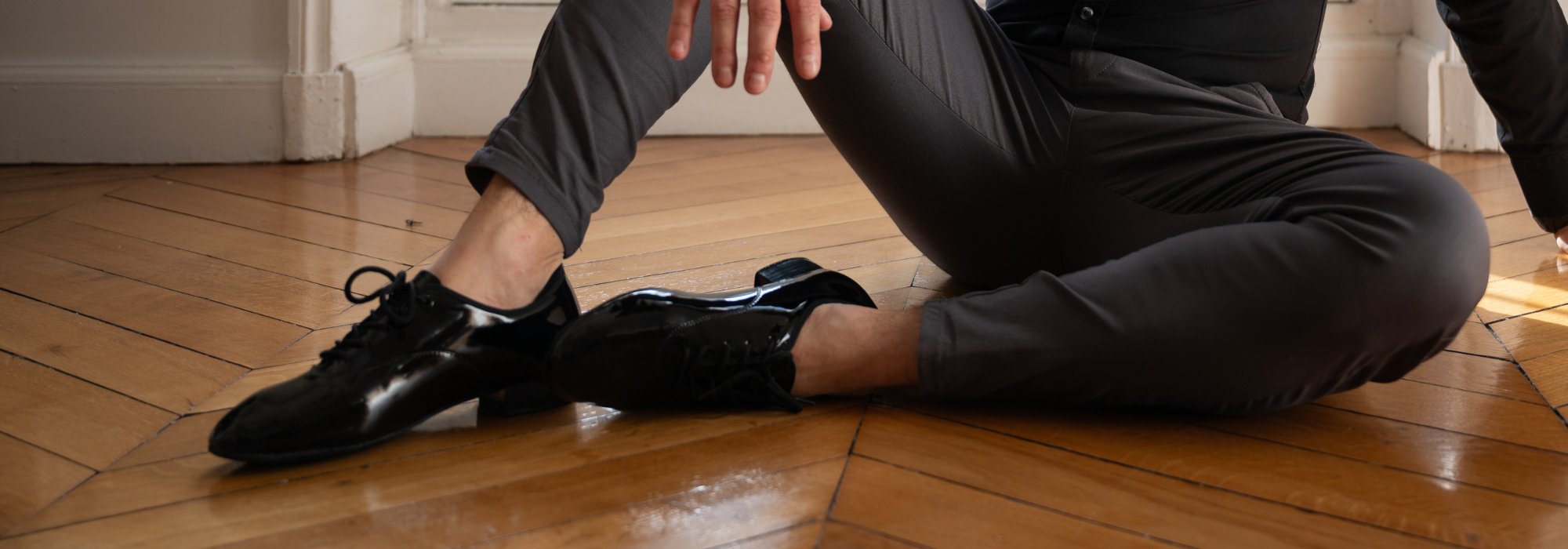What is the difference between Latin dance and living room dance?
You wonder which dance to choose between the Sensuality of Latin dances and the Beauty of living room dances ? Would you like to understand their differences to better orient your learning or simply satisfy your curiosity?
This article is there to enlighten you!
For centuries, dance has embodied a form of universal expression, whether anchored in the European traditions of aristocratic balls or nourished by the energy of Caribbean and African cultures. Each style has its unique charm, whether it is the rigor of linear movements or the freedom of hip movements.
In this article, you will discover:
-
The origins and cultural differences of these two styles,
-
Technical and postural specificities,
-
The types of music that accompany them,
-
And above all, which best corresponds to your personal goals.
Ready to dive into the exciting universe of dance? Let's go!
1. Origins and cultural differences
1.1 Living room dances
THE living room dances have their origins in European aristocratic balls of the 19th century. Anchored in tradition, they were at the time the reflection of the prestige and elegance of high societies. In the salons illuminated by candlesticks and accompanied by orchestral music, the dances like the Viennese waltz, THE Foxtrot or the Tango developed.
Over time, these dances have been codified to allow harmony in their practice, both on the track and in competition. Each gesture, each trip obeys strict rules in order to guarantee a fluidity and a Unparalleled visual aesthetic. Today, these dances continue to shine in sports competitions, where technical precision and elegance remain major criteria.
1.2 Latin dances
Conversely, the Latin dances immerse their roots in Cultural mixing African, Spanish and Caribbean peoples. Born in working -class districts and often practiced outdoors, these dances are a Celebration of life, party and traditions. They express joy, sensuality and energy through rhythm and corporately expressive movements.
Among the most popular Latin dances, we find:
-
Puerto Rican salsa : Puerto Rican salsa draws its inspirations from living room dance and Caribbean traditions. It favors an elegant posture while valuing vibrant and catchy rhythms.
-
Cuban salsa : Cuban salsa is born from the festive and social influences of the Caribbean. Through her overflowing energy, she embodies the spirit of the party and invites dancers to let themselves be carried by the pleasure of the moment.
-
Bachata : Bachata is from the Dominican Republic and combines simplicity and sensuality. It seduces with its soft rhythm and its contemporary melodies which make it accessible and popular with everyone.
-
Kizomba : Kizomba is often described as an African tango that emerges from a mixture of Angolan and modern traditions. It is characterized by an intimate connection between the partners and a fluidity which enhances each movement.
To put it simply, the Latin dances embody a lively energy and a freedom of movement which contrast with the formal rigor of the living room dances. However, the two universes share a common point: that of celebrating the human bond through dance.

2. Techniques and posture
2.1 The refined posture of living room dances
The living room dances are distinguished by a rigorous and refined posture. Partners adopt a Strict closed position, maintaining a constant connection between them. This posture guarantees travel graceful and linear On the track, which creates a visual harmony which enhances the beauty of the movements.
An emblematic example is the Waltz. This dance is known for its majestic figures which are deployed to the rhythm of a slow tempo. The dancers slide with fluidity, while maintaining a straight posture and perfect synchronization.
2.2 The freedom and energy of Latin dances
Latin dances favor variety and spontaneity. Unlike living room dances, they alternate between open, closed positions or with a simple handling. These different positions promote a more free and expressive dynamic between partners.
In addition, these dances put a particular accent on Hip movements which accompany the bewitching rhythm of music. L'bodily expression There plays a central role because it allows dancers to interpret each piece with passion and energy. Each gesture then becomes a way to express emotions, be it the sensuality of bachata, the liveliness of salsa or the fluidity of the kizomba.
3. Music and tempos
3.1 Music of living room dances
Living room dances are practiced on classical and timeless style music. The pieces used often come from the classical music, of orchestral jazz or other genres to regular tempos And measured which allow fluid and harmonious movements on the track.
Examples : THE Slow Foxtrot is dancing on soft and sunk rhythms, while the Competition tango is based on more marked and intense music.
3.2 Latin dances music
Latin dances, conversely, explore a Wide variety of musical genres to traditional and modern influences. These vibrant music, often playful, include rhythms from pop, reggaeton, or Commercial remixes which attracts a larger and diverse audience.
Examples : There Bachata remixed is accompanied by popular songs which offer a romantic and accessible atmosphere, while the Kizomba Bases on modern and sensual pieces that amplify the intimate connection between partners.

4. What type of dance to choose?
4.1 Why choose living room dances?
These dances are ideal for formal events such as balls or the competitions in which the perfect posture and the synchronization of partners are honored. Whether you want to impress on a dance floor or perfect your movements in a competitive setting, the living room dances offer an opportunity to shine with distinction.
4.2 Why choose Latin dances?
Latin dances, on the other hand, seduce those who seek The amusement, there relaxation and a passionate way to express their emotions. These vibrant and accessible dances allow you to free yourself from everyday life while immersing yourself with warm and catchy rhythms.
They are perfect for social contexts such as SBK evenings Because they promote a friendly and festive atmosphere. Whether in a couple or in a group, they offer a way to share moments of joy while exploring a wide range of emotions and styles.

Want to get started? Try a free Latin dance class!
We arrive at the end of this article on Differences between Latin dance and living room dance! Whether you are attracted by the beauty and rigor of the living room dances or by the freedom and the energy of the Latin dances, each style has something to seduce you.
Latin dance is perfect if you want to have fun and express your emotions on vibrant and playful rhythms, while the living room dance will delight you with its grace adapted to formal or more competitive occasions.
If you don't know which dance style to choose, there is no better way to find out than by practicing. Whether you are tempted by a sensual bachata or a bewitching kizomba, our courses are done for you.
→ Book a free trial course now And fall (you too) in love with Latin dance!









